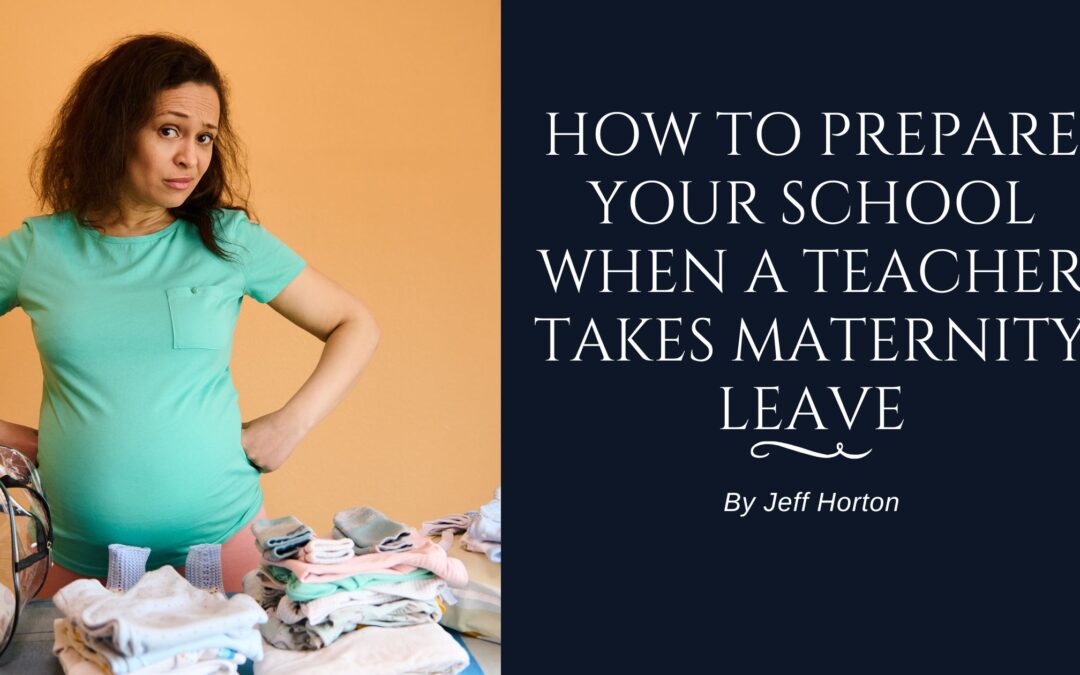Preparing a school for a teacher’s maternity leave is a crucial task that demands thoughtful planning and execution. Maternity leave, a significant period in a teacher’s life, also challenges the educational institution. The absence of a regular teacher can impact the continuity and quality of education. Therefore, it’s imperative to have a well-structured plan that addresses the temporary gap while ensuring the least disruption to students’ learning. This plan involves understanding the legal and policy framework surrounding maternity leave, identifying suitable temporary teaching solutions, and ensuring a smooth transition for the departing teacher and their replacement. Clear communication with students, parents, and staff is vital to manage expectations and maintain a positive learning environment.
Maternity leave in education is more than just a temporary absence; it’s a period that necessitates careful consideration of various factors to ensure continuity in teaching and learning. Understanding the legalities, including the duration and rights of maternity leave, is foundational. In many regions, maternity leave policies are governed by national or state laws, and schools must comply with these regulations while supporting their staff. Beyond legal compliance, the school’s approach to handling maternity leave reflects its commitment to its workforce’s well-being and its dedication to maintaining educational standards. Planning for maternity leave involves multiple stakeholders – administrators, human resources, the departing teacher, potential substitutes, students, and parents. Each plays a unique role in this transition. The school must balance the need for a qualified replacement teacher with budgetary constraints and the specific needs of the students. Furthermore, the emotional and psychological aspects, such as the impact on students and the returning teacher’s reintegration, cannot be overlooked. This complex process requires a comprehensive and empathetic approach.
The first critical step in preparing for a teacher’s maternity leave is early and effective planning. This begins with open communication between the teacher and school administration. Once the teacher’s expected leave dates are known, the school should swiftly commence the search for a suitable substitute. The ideal candidate should possess the necessary qualifications and teaching experience, particularly in the subject area of the departing teacher. Additionally, finding someone who can seamlessly blend into the school’s culture and teaching philosophy is essential. It’s not just about academic continuity; the substitute teacher should also be capable of maintaining the classroom’s social and emotional balance. This planning phase also includes preparing the students for the change. Informing them in advance helps manage their expectations and reduces anxiety about the transition. The school should involve the departing teacher in the transition process as much as possible. This might include having the teacher help select their substitute or prepare handover notes and teaching materials. This involvement ensures that the replacement teacher is well-equipped to take over the classes, thus maintaining the quality of education and minimizing disruption.
Another fundamental aspect of preparing for a teacher’s maternity leave is ensuring continuity in curriculum and teaching methods. This requires detailed handover documentation from the departing teacher, outlining the curriculum, lesson plans, student progress, and any specific teaching strategies or classroom management techniques that have been effective. The substitute teachers should be given ample time to familiarize themselves with these materials and the curriculum structure. Arranging a few days of overlap where the substitute can shadow the departing teacher can be incredibly beneficial. This practice allows the substitute to observe classroom dynamics, understand the students’ learning styles, and get acquainted with the school’s teaching methodologies. Additionally, the school should support the substitute teacher through mentoring or professional development, especially if they are new or less experienced. Regular check-ins and feedback sessions can help the substitute adjust their teaching methods as needed and ensure they feel supported throughout their tenure. This focus on continuity is vital not only for the student’s academic success but also for maintaining a stable and familiar learning environment during the teacher’s absence.
Communication and support are key elements in effectively managing a teacher’s maternity leave. Clear communication with all stakeholders – students, parents, faculty, and the substitute teacher – is crucial. The school should inform parents about the maternity leave and the replacement plans through a formal letter or a meeting. This transparency helps build trust and ensures parents know about the changes and can support their children through the transition. Regular updates should be provided, especially if any further changes or developments occur. Equally important is the support system for the departing teacher and the substitute. The school should ensure that the departing teacher feels valued and supported during this transition, recognizing the emotional aspects of leaving their class. Upon return, a reintegration plan should facilitate their smooth re-entry into the school environment. For the substitute teacher, a supportive and inclusive environment is vital. This includes access to resources, professional development opportunities, and a clear point of contact for any issues or concerns. By fostering a supportive and communicative environment, the school can mitigate the challenges associated with maternity leave, ensuring a positive experience for everyone involved.
Preparing for a teacher’s maternity leave is a multifaceted process requiring careful planning, education continuity, and a strong communication and support system. Early and effective planning ensures a suitable substitute, reducing student learning disruption. Ensuring continuity in curriculum and teaching methods is paramount for maintaining educational standards and providing a stable learning environment. Open and ongoing communication with all stakeholders and a robust support system are essential for managing expectations and fostering a positive experience for everyone involved. Schools must recognize the importance of this transitional period, not only as a compliance obligation but as an opportunity to demonstrate their commitment to staff welfare and educational excellence. By effectively managing a teacher’s maternity leave, schools can maintain high educational standards while supporting their staff’s life events. This approach reflects a school’s resilience and adaptability, essential in the ever-evolving education landscape.
